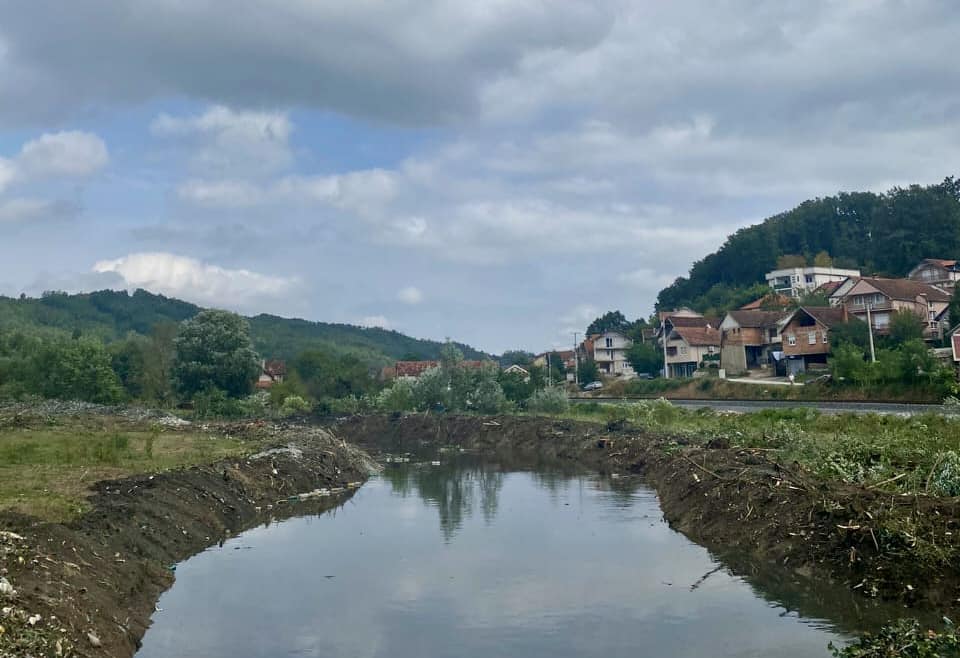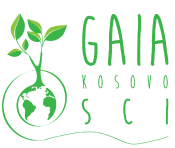The “cleaning” (from trash) of Kosovo rivers was decided and financed by the Ministry of Environment, Spatial Planning and Infrastructure. Information about these actions is limited to a Facebook post of the minister and the web-site of the Ministry, and communication with the different stakeholders (NGO, villagers, municipalities) was also non-existent. Information about it is impossible to find as the website of the ministry is not working. Why? When? Where? A lot of questions remain. The Ministry should prove that these actions are really solving the problem of trash, are aligned with European Union and Kosovo legislation, and don’t have negative impacts on biodiversity, ecological status of rivers and on the different human uses of the river.

Most probably, they cannot prove these points, as numerous scientific articles show that the cleaning of rivers, as well as the destruction of riparian vegetation, are accompanied by numerous negative effects, whether from an ecological, social or economic point of view.
We will briefly review scientific literature to demonstrate how the “cleaning” of Kosovo’s rivers is an ecological, economic and social aberration.
Stępień et al. (2019) analysed the “Effects of dredging on the vegetation in a small lowland river”, a situation similar to our case. They showed that:
“Conventional river engineering operations have a substantial influence on the fluvial ecosystem. Regulation and channelization generally reduce the physical heterogeneity of riverbeds and banks and the heterogeneity of habitats. They determine the character, diversity and species richness of plant communities.”
They also demonstrate that “The number of species in the river channel decreased, as dredging of the river bed and levelling of the banks had markedly reduced habitat diversity. Although species richness in the second year after the dredging approached the values recorded before the intervention, the absence of particular species or phytocenoses associated with shallow river banks and sandbars was still observed. The change in habitat conditions and the destruction of the vegetation cover during the dredging enabled penetration by numerous previously unrecorded alien species of plants and apophytes.”
In a study about mountain rivers in Himalaya, Singh & Sidhu (2016) showed that “The unplanned and unregulated large-scale mining of sand, gravel and stones from riverbeds and riverbanks are not devoid of environmental and social impacts. Riverbed mining in the Himalayan terrain has caused erosion and has left the river-plains much more vulnerable to flooding because it allows loose landmass to be washed downstream, especially during the monsoon season. […] These can severely impact the ecological balance of a river and damage flora, fauna and the riparian habitats.” The dredging of the Kosovo rivers can be likened to mining as it removes sand, gravel and stones from the river.
Govorushko (2007) in a review of “Effect of human activity on rivers” talk about the “Physical disturbance of riverbeds”: “The most intensive impact on riverbeds is made during extraction of building materials or other fossils in riverbed carriers, dredging works with a view to facilitate navigation, and construction of pipelines’ underwater sections. Such activities change the evolution of riverbed processes that affects hydrobionts’ natural habitat. In the course of extraction of ground from riverbeds and its transportation to dumps water becomes muddier for some time. Extraction of large massifs of riverbeds’ ground causes deepening and straightening of riverbeds, as well as decreasing of its branching and lowering water level during low-water seasons.”
Sandoval (2003) in his thesis tried “to identify social, economic and environmental impacts associated with dredging in riverbed settings and potential preventive actions. […] Increases in river water turbidity, changes in drinking water quality for the nearby cities, and increased mercury mobilization [not relevant in this case, since this river was in a gold panning area] are the main environmental impacts this thesis project evaluates.”
In their introduction, van Vuren et al. (2015), describe the past engineering of the Dutch river and the consequences that it had on water levels: “Over the course of centuries river engineers in The Netherlands have focused on regulating the Dutch rivers for inland navigation and flood management. The river training works they used, consisted of the construction of levees, bend cut-offs, normalisation and canalisation. The consequence was an on-going eroding bed since dikes, levees, groynes and longitudinal dams all form width constrictions, resulting in lower low water levels and lower ground water levels.”
Hámor T. & Kovács (2018) recognize that:
“Dredging may also destroy natural filtering layers for potable water reserves, and may emit polluting substances (engine fuels, lubricants, exhaust gases).”
Numerous articles describe the importance of riparian vegetation, which is torn out during the “cleaning” of Kosovo rivers.
“Vegetation along streams exercises important controls over physical conditions in the stream environment. It acts as a roughness element that reduces the velocity and erosive energy of over-bank flow during floods”.
Li and Shen, 1973
“Healthy riparian vegetation tends to stabilize streambanks, determines bank morphology and may help reduce streambank damage from ice, log debris, and animal trampling”.
Swanson et al., 1982
“Streamside vegetation strongly influences the quality of habitat for anadromous and resident coldwater fishes”.
Duff, 1979
“Riparian vegetation provides shade, preventing adverse water temperature fluctuations”.
Meehan et al., 1977
“The roots of trees, shrubs, and herbaceous vegetation stabilize streambanks, providing cover in the form of overhanging banks”.
Marcuson, 1977
“Streamside vegetation acts as a “filter” to prevent sediment and debris from man’s activities from entering the stream”.
Meehan et al., 1977
“Riparian vegetation also directly controls the food chain of the ecosystem by shading the stream and providing organic detritus and insects for the stream organisms”.
Cummins, 1974
All these elements demonstrate that dredging the riverbed and removing riparian vegetation damages the environment, reduces the quality of drinking water and increases the risk of flooding. These actions therefore negatively affect the people of Kosovo and the environment. They should be considered illegal. Indeed, the Water Framework Directive requires Member States to take the necessary actions to ensure that their waterways achieve a good ecological and chemical status. All the articles above showed that “cleaning” rivers degrades their ecological state. Therefore, they are illegal under European Union law.
Source:
Cummins, K. W. (1974). Structure and function of stream ecosystems. BioScience, 24(11), 631-641.
Duff, D. A. (1979). Riparian habitat recovery on Big Creek, Rich County, Utah. In: Proceedings of the Forum-grazing and Riparian/stream Ecosystems. Trout Unlimited; Denver, Colorado, 1979 (pp. 91-92).
Govorushko, S. (2007). Effect of Human Activity on Rivers.
Hámor T., & Kovács G. (2018). Riverbed aggregates dredging. European Geologist, 45, 15-16.
Li R-M., hen H.W. (1973). Effect of tall vegetation and flow sediment. J. Hydraulics Div., ASCE, 99(5), 793-814.
Marcuson, P. E. (1977). Effect of cattle grazing on brown trout in Rock Creek, Montana.
Meehan, W. R., Swanson, F. J., & Sedell, J. R. (1977). Influences of Riparian Vegetation on Aquatic Ecosystems with Particular Reference to Salmonid Fishes and Their Food Supply. In: Importance, Preservation, and Management of Riparian Habitat: A Symposium, Tucson, Arizona, July 9, 1977 (Vol. 43, p. 137). Rocky Mountain Forest and Range Experiment Station, Forest Service, US Department of Agriculture.
Sandoval, M. C. (2003). Evaluation of environmental impacts of riverbed dredging: a proposed project on the lower Caroni River, Venezuela (T). University of British Columbia.
Singh, R., & Sidhu, M. S. (2016). An overview of environmental impacts of riverbed mining in Himalayan terrain of Himachal Pradesh. Journal of applied geochemistry, 18(4), 473-479.
Stępień, E., Zawal, A., Buczyński, P., Buczyńska, E., & Szenejko, M. (2019). Effects of dredging on the vegetation in a small lowland river. PeerJ, 7, e6282.
Swanson, F. J., Gregory, S. V., Sedell, J. R., & Campbell, A. G. (1982). Land-water interactions: the riparian zone.
van Vuren, S., Paarlberg, A., & Havinga, H. (2015). The aftermath of “Room for the River” and restoration works: Coping with excessive maintenance dredging. Journal of hydro-environment research, 9(2), 172-186.ReplyReply AllForwardEdit as new







